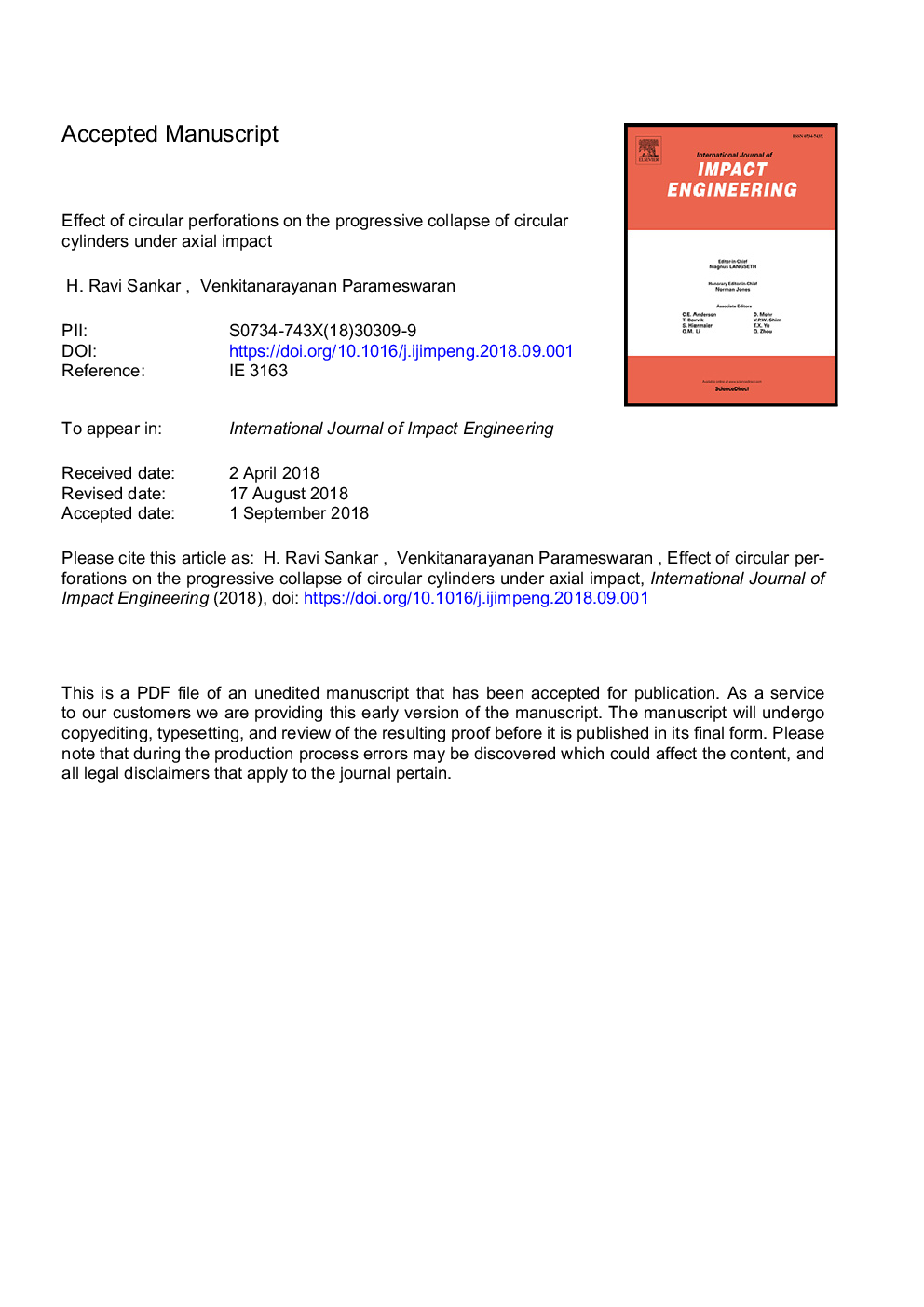| Article ID | Journal | Published Year | Pages | File Type |
|---|---|---|---|---|
| 10133802 | International Journal of Impact Engineering | 2018 | 47 Pages |
Abstract
The collapse of circular cylinders, having circular perforations distributed in a single or multiple rows, when subjected to axial impact was investigated. Extensive numerical simulations were carried out to first identify the effect of the wall thickness, the perforation size and their arrangement on the peak load, the deformation pattern and the energy absorption characteristics of cylinders undergoing progressive collapse. The results indicated that, while the presence of holes considerably reduced the initial peak, they localized the deformation to such an extent that the load at the formation of subsequent buckles increased, which affected the energy efficiency adversely. Experiments were conducted by impacting the cylinders with a moving mass. De-stabilization of the progressive mode of collapse due to cracking was observed in some cases. For the cases in which the cylinders did not crack, the experimental and numerical observations were in agreement. Through numerical analysis, a design in which subsequent rows of holes having a lesser number of holes was identified such that, the load peaks at the formation of all buckles were equalized. The energy efficiency in this case improved and was higher than that of a cylinder without holes. The experiments conducted for selected cases confirmed the numerical findings. Therefore, this study presents a methodology to reduce and equalize the peak loads at formation of buckles and simultaneously improve the energy efficiency without destabilizing the progressive mode of collapse.
Related Topics
Physical Sciences and Engineering
Engineering
Mechanical Engineering
Authors
H. Ravi Sankar, Venkitanarayanan Parameswaran,
